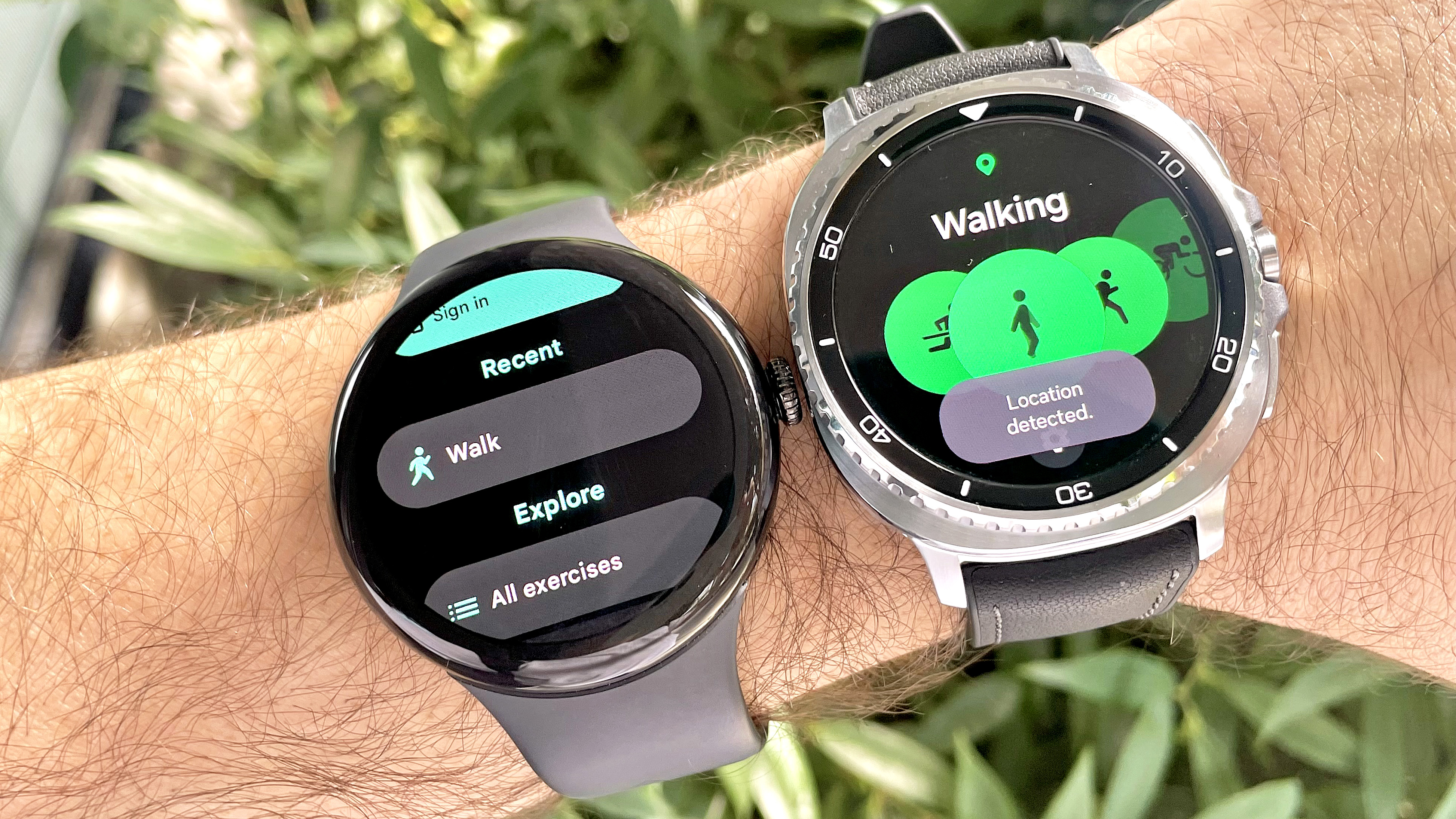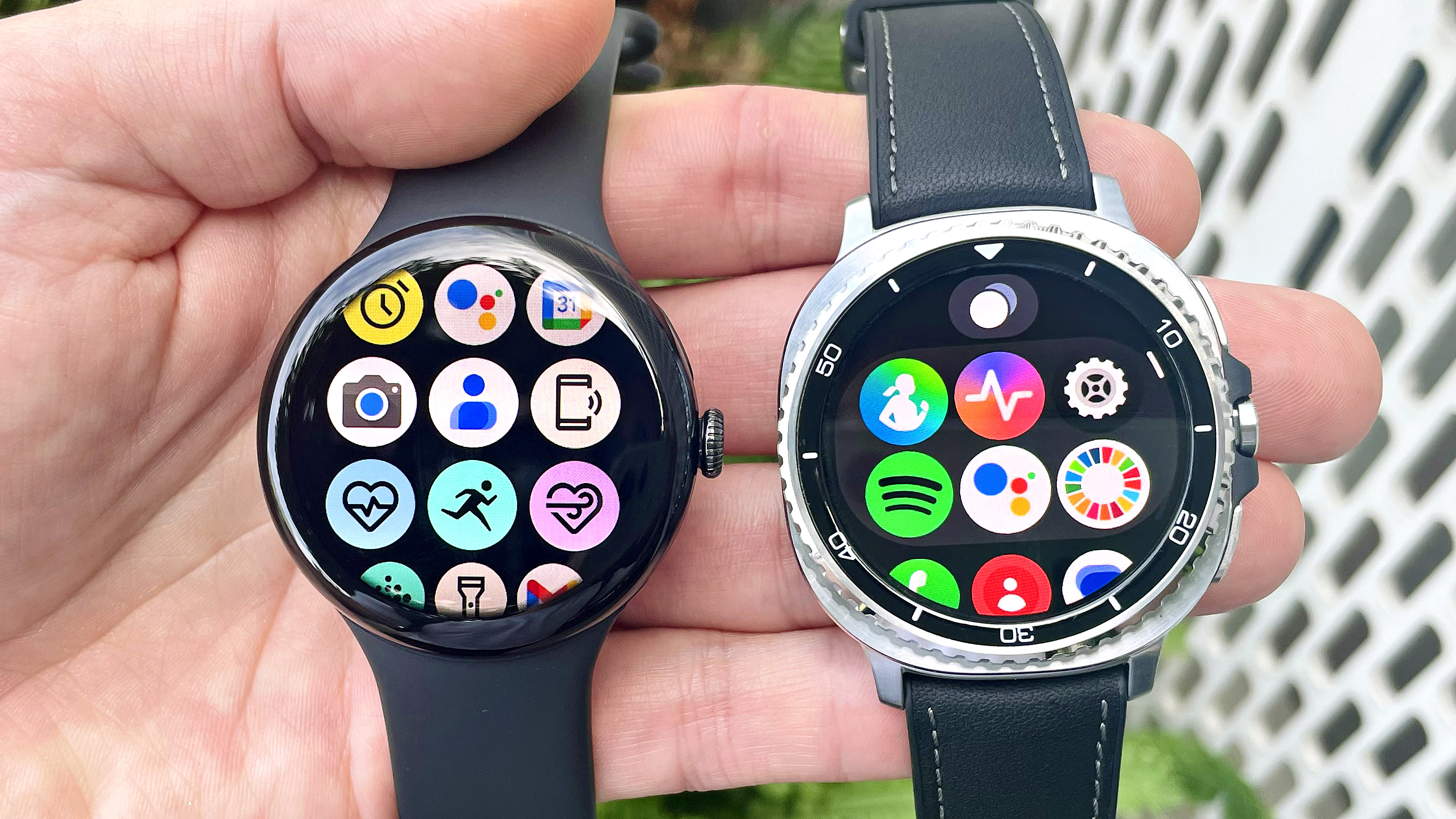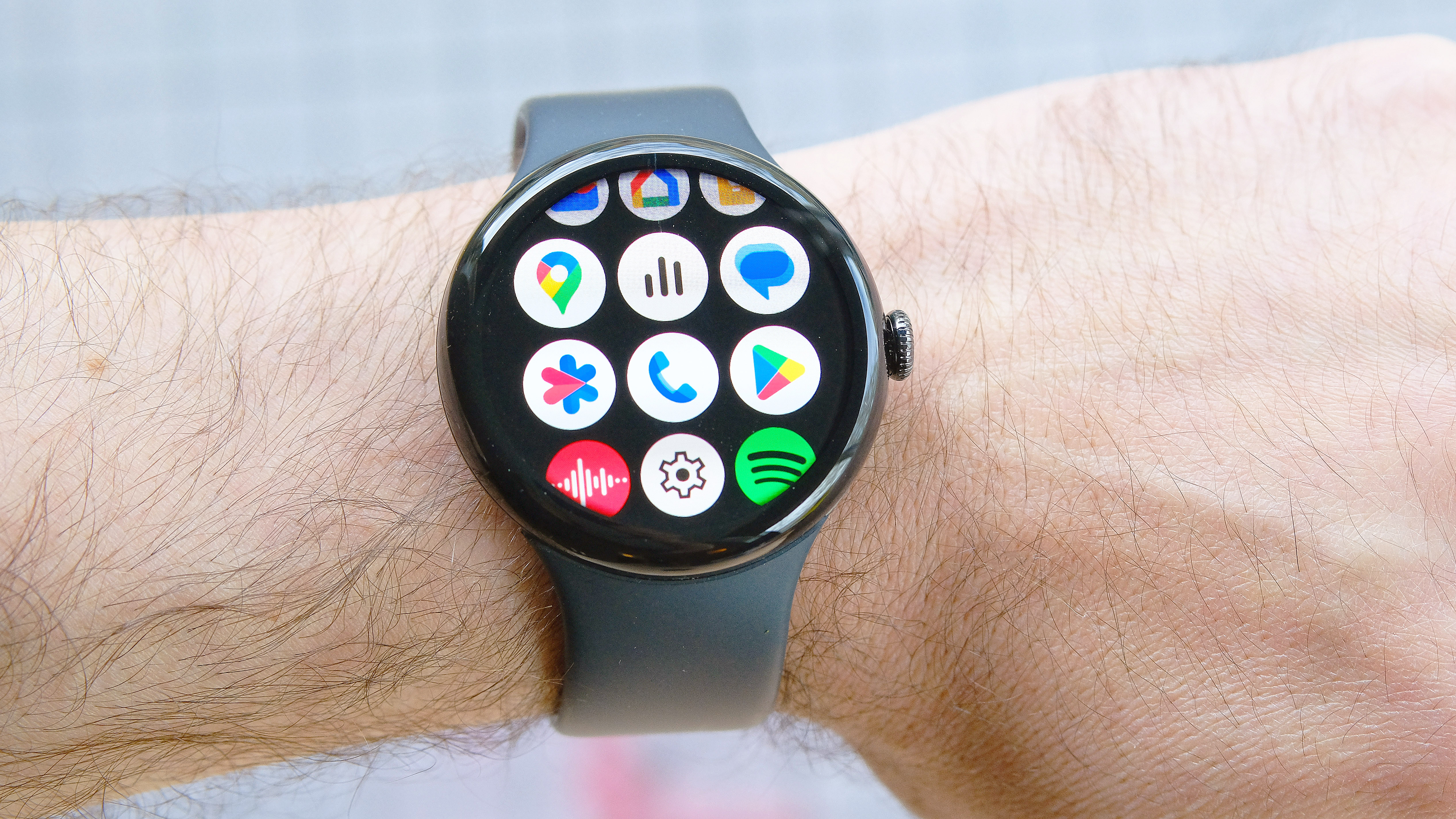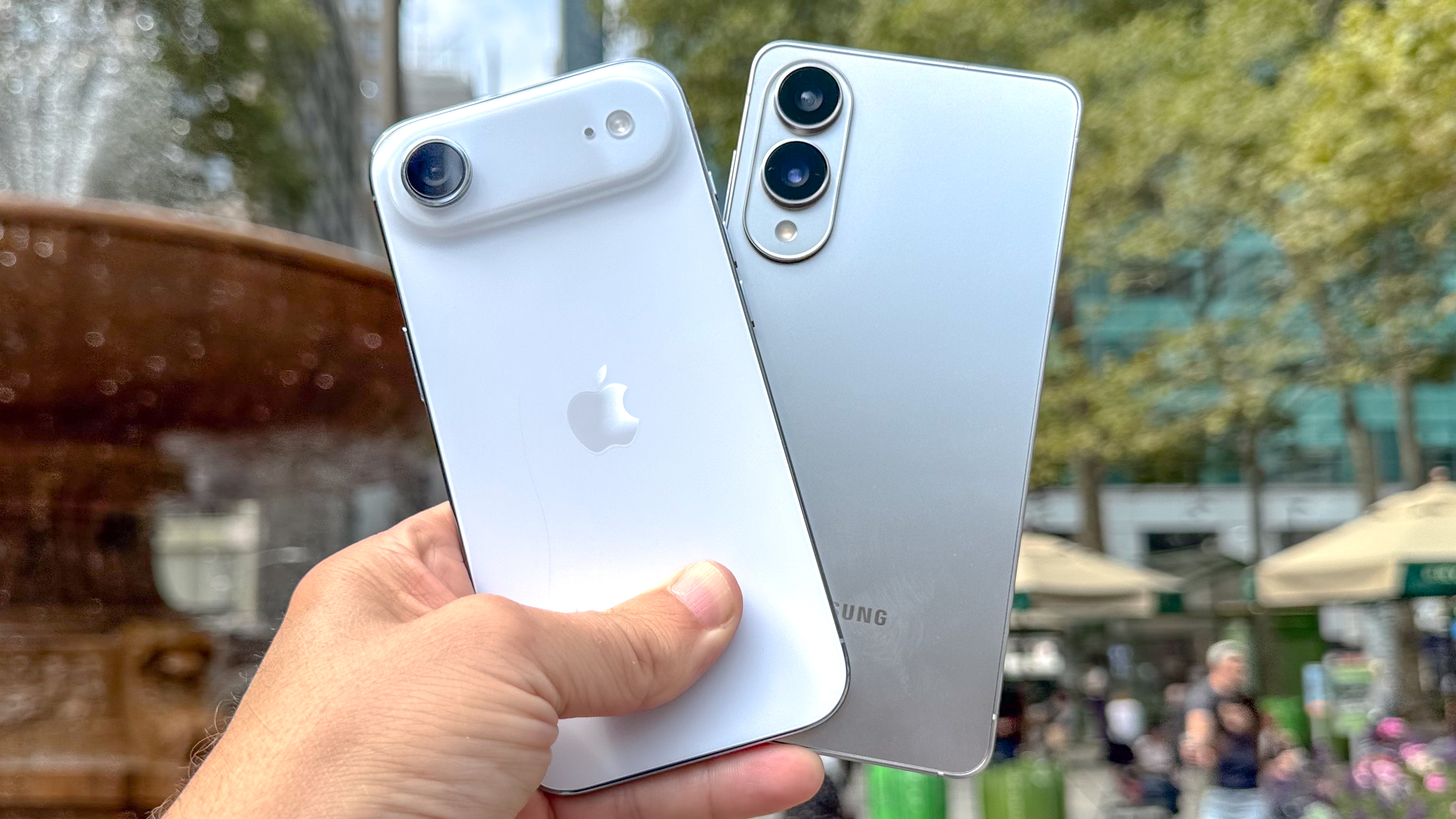I just walked 4,000 steps with the Google Pixel Watch 3 on my right wrist and the new Samsung Galaxy Watch 8 on my left to determine which is the more competent fitness tracker.
To keep things fair, I manually counted my steps as the primary control for this showdown; I also ran Strava on a separate device (iPhone 12 mini) as a control for distance, elevation and pace data.
After 4,000 steps and roughly 2.3 miles, one smartwatch proved (slightly) more accurate in this match-up of the new Samsung Galaxy Watch 8 vs Google Pixel Watch 3. Read on to find out which.
Pixel Watch 3 vs Samsung Galaxy Watch 8 comparison

But first, here’s a quick look at how these two flagship models compare. Both run Google’s Wear OS platform, and neither plays nicely with the iPhone. The Galaxy Watch 8 is Samsung’s new release for 2025, while the Pixel Watch 3 represents Google’s 2024 model; we’ll likely get a Pixel Watch 4 model in August, if rumors prove true.
Design-wise, the Galaxy Watch 8 features a “cushion” case design, borrowed from 2024’s Galaxy Watch Ultra, compared to a circular case for the Pixel Watch 3, though both feature circular displays.
The Pixel Watch 3 comes in two sizes, 41mm and 45mm; the latter is represented here. The Galaxy Watch 8 standard model similarly comes in a smaller, 41mm, and larger, 44mm option.
There’s also a 46mm Galaxy Watch 8 Classic with a rotating bezel, used for this comparison. The standard Galaxy Watch 8 models start at $349 for the 40mm model, which is the same starting cost as the 41mm Pixel Watch 3 (though you can score one on sale right now, link below).
Both smartwatches feature handy safety tools and access to the same enormous app library. Each is also brimming with wellness and fitness features, including deep insights into sleep quality, helpful workout training recovery tools, and potentially life-saving health-monitoring apps.
The Pixel Watch 3, for instance, is the only smartwatch on the market with Loss of Pulse Detection. Similarly, Samsung’s new cardiovascular load monitoring tool is only available on the latest Galaxy Watch 8 and Galaxy Watch Ultra models. Still, either can perform an ECG, check your heart rate, or monitor your blood oxygen saturation levels.
Nuances aside, these two devices are remarkably well matched.
So, which came out ahead in this walk test? In my previous article, where I walked 5,000 steps with the Apple Watch 10 vs. the Samsung Galaxy Watch 8, Cupertino took home the trophy. Can Samsung score some redemption? Find the results of my walk test with the Pixel Watch 3 vs Galaxy Watch 8 below.

Pixel Watch 3 vs Samsung Galaxy Watch 8 results
| Header Cell – Column 0 |
Samsung Galaxy Watch 8 Classic |
Pixel Watch 3 XL |
Control |
|---|---|---|---|
|
Step count |
4,044 steps |
4,042 steps |
4,000 steps (manual count) |
|
Distance |
2.30 miles |
2.33 miles |
2.33 miles (Strava) |
|
Elevation gain |
151 feet |
157 feet |
143 feet (Strava) |
|
Average pace |
14 mins 42 secs per mile |
15 mins 4 secs per mile |
14 mins 29 secs per mile (Strava) |
|
Average heart rate |
133 bpm |
132 bpm |
n/a |
|
Max heart rate |
158 bpm |
158 bpm |
n/a |
|
Total calories burned |
247 calories |
339 calories |
n/a |
|
Device battery usage |
10% |
6% |
n/a |
Both the Pixel Watch 3 and Galaxy Watch 8 each produced step count totals within 50 steps of my actual total. This is a very impressive level of accuracy and well within a reasonable margin for error. Strava also measures step count, and was even more spot-on with a total of 3,990 steps.
All three devices also essentially measured the same distance covered and similar amounts of elevation gained; the 14 feet separating Strava’s tally from Google’s is equivalent to 1.5 flights of stairs, i.e., not enough for concern.
The Pixel Watch 3 and Galaxy Watch 8 produced step count totals within 50 steps of my actual total. This is a very impressive level of accuracy.
Average pace data additionally matches nicely; I was moving fairly quickly for the duration of this walk and made minimal stops, except for one or two traffic lights. Strava measured the fastest moving time, but also provides an averaged elapsed pace, which came out to 15 minutes and 17 seconds per mile.
Both Samsung and Google wearables have a well-earned reputation for accurate heart rate data — something I can attest to based on reviewing numerous devices from each — and the results from this walk test are in near-perfect agreement with not only each other, but also my expectations based on numerous prior tests.
Finally, Samsung calculated fewer calories burned during my roughly 35-minute walk, but coincidentally, also burned nearly twice the amount of battery tracking my trek as the Pixel Watch 3.
Pixel Watch 3 vs Samsung Galaxy Watch 8 winner

And the winner of this challenge is… the Google Pixel Watch 3. That said, this is about as close as these walk tests come to being called a tie. Over the years, I’ve probably written 25-plus head-to-head comparisons of this type, and I can’t think of another time where the winner was determined by just two steps.
Stay tuned for more testing on the Samsung Galaxy Watch 8, including my full review where I’ll share the inside scoop on the device’s newest features, like Run Coach, bedtime reminders, antioxidant tracking and Vascular Load monitoring.
Which smartwatches or fitness trackers would you like to see me test head-to-head next? Let me know in the comments below. Until next time, happy walking!
More from Tom’s Guide
Source link


